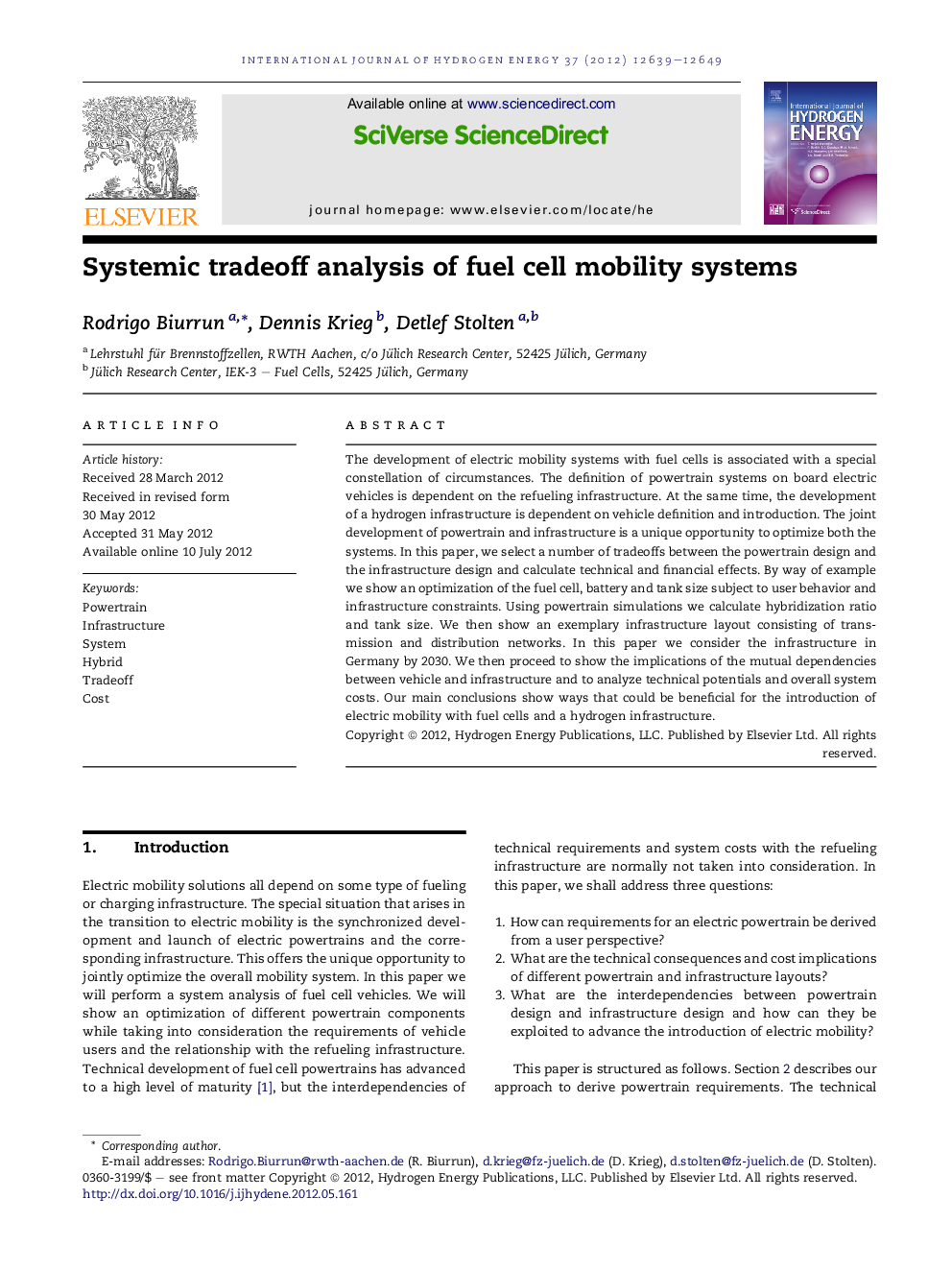| Article ID | Journal | Published Year | Pages | File Type |
|---|---|---|---|---|
| 1271101 | International Journal of Hydrogen Energy | 2012 | 11 Pages |
The development of electric mobility systems with fuel cells is associated with a special constellation of circumstances. The definition of powertrain systems on board electric vehicles is dependent on the refueling infrastructure. At the same time, the development of a hydrogen infrastructure is dependent on vehicle definition and introduction. The joint development of powertrain and infrastructure is a unique opportunity to optimize both the systems. In this paper, we select a number of tradeoffs between the powertrain design and the infrastructure design and calculate technical and financial effects. By way of example we show an optimization of the fuel cell, battery and tank size subject to user behavior and infrastructure constraints. Using powertrain simulations we calculate hybridization ratio and tank size. We then show an exemplary infrastructure layout consisting of transmission and distribution networks. In this paper we consider the infrastructure in Germany by 2030. We then proceed to show the implications of the mutual dependencies between vehicle and infrastructure and to analyze technical potentials and overall system costs. Our main conclusions show ways that could be beneficial for the introduction of electric mobility with fuel cells and a hydrogen infrastructure.
► Optimization of fuel cell, battery & tank size subject to user & infrastructure. ► Analysis of dependencies between vehicle & infrastructure, technical potentials & system costs. ► A value of about 30% hybridization is shown to be adequate in simulation study. ► Lower tank pressures: little infrastructure benefit, big reduction of powertrain cost. ► Ca 1000 fueling stations necessary for market coverage & serviceable vehicle numbers.
